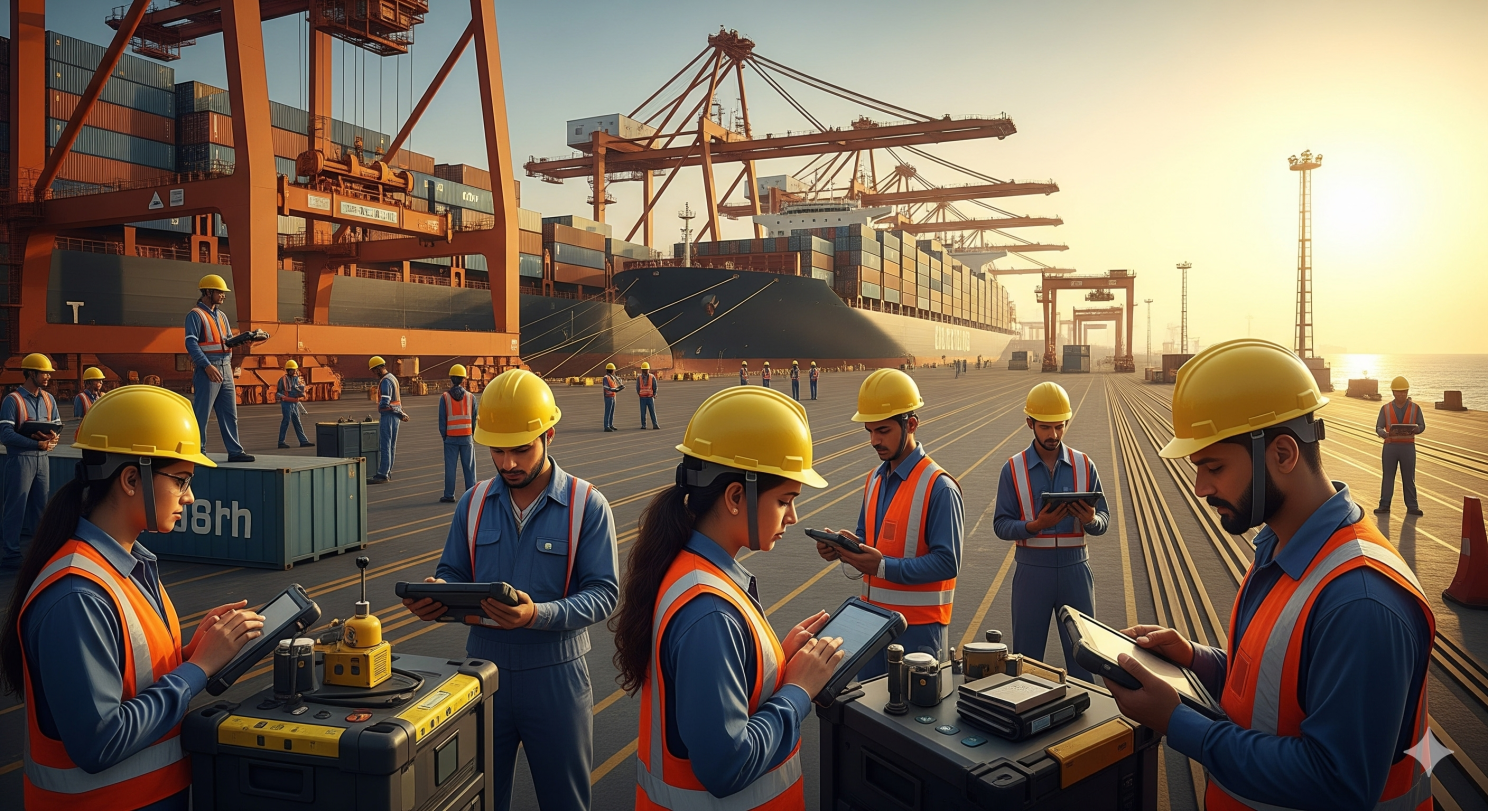
Future-Proofing India’s Knowledge Economy: Human Capital Is the New Growth Engine
India stands at an interesting inflection point. The nation is now a Top 4 economy with $4Tn+ in nominal GDP and among the Top 3 globally in purchasing power parity at $17Tn+. India has also emerged as a digital leader, thanks to the nation's pioneering public infrastructure, including Aadhaar, UPI, DigiLocker, and ONDC. However, if India is to sustain high growth, create employment at scale, and position itself as a knowledge superpower, the next decade must be decisively focused on building and future-proofing human capital.
Three pillars are imperative in this vision: transforming India’s education system, enabling a shift from digital delivery to frontier technology leadership, and ensuring capital formation grows fast enough to power industrial and intellectual ambition. Each is necessary. Together, they are transformative.
Reimagining Education: From Volume to Value
Higher Education – Unlocking Innovation, Not Just Degrees
India’s higher education ecosystem has reached tremendous scale—with over 58,000 institutions and 43 million enrolled students. Now, focus must be on improving quality, access and affordability. Gross Enrolment Ratio (GER) stands at ~28%, with wide state and quality disparities. Employability of graduates remains a structural concern, and India produces just 25,000–30,000 PhDs a year—far fewer than what a frontier economy requires.
The National Education Policy (NEP) 2020 lays out a roadmap to increase GER to 50% by 2035. This must be coupled with a focus on:
- Interdisciplinary and research-led education
- Global benchmarking and institutional autonomy
- Faculty quality and R&D intensity
- Robust industry-academia collaboration
India must create generational institutions that go beyond enrolment counts and focus on knowledge generation, core intellectual property (IP) generation, state-of-the-art research, spinning out globally competitive startups, and training talent that can build cutting-edge technology in India.

School System – Future-proofing the Foundation
School education in India must be shored up at the population scale. ASER surveys consistently show large gaps in foundational literacy and numeracy, particularly in government schools. Drop-off rates are still reasonably high, with roughly 80% of primary school students completing Class X, and 60% completing Class XII. Digital interventions like DIKSHA and PM SHRI Schools are promising, but we need tighter focus on:
- Teacher capacity and accountability
- Early years education, especially in underserved states
- Career exposure and digital fluency by Class 10
- Universal education till Class 12
The goal for 2035 must be clear: universal foundational learning, STEM and digital readiness in secondary education, and equitable access to quality across rural and urban India. A broken school pipeline undermines every skilling and employment outcome.

Beyond Digital India: Scaling Frontier-Tech Capacity
India is rightly celebrated as a pioneer in digital public infrastructure (DPI). The JAM trinity (Jan Dhan, Aadhaar, Mobile), UPI’s real-time payments architecture, and DigiLocker’s identity portability have empowered citizens and reduced friction for enterprises. This ecosystem has catalysed over 100,000 startups and democratised access to public and private services.
But India must now move from being a creator and consumer of digital platforms to a creator of frontier technology.
To lead in the decades ahead, India must invest in:
- Deep-tech R&D hubs in AI, semiconductors, space, biotech, robotics, and quantum
- Postgraduate and doctoral programs focused on frontier domains
- National Deep-tech Missions that provide public funding models with long gestation windows (5–10 years) to academia and startups
- Incentives for private industry to pursue R&D investments that align with national indigenisation priorities
- Market making as statecraft - Governmental departments, Defence, and PSUs to become the first customers for startups and industries aligned with national deep-tech missions
Without this pivot, India risks plateauing as a digital service provider, while others capture value in foundational tech, critical IP, and dual-use (civil + defence) innovation.

Capital Formation Must Grow 15% Annually: The Flywheel of Jobs and Scale
India’s Gross Capital Formation (GCF) at $1.2Tn annually hovers around 30% of GDP. India is one of the few economies to be able to invest $1Tn+ year after year in the economy, which is admirable. However, this is adequate for sustaining moderate growth, but not for leapfrogging into high-productivity sectors and job-intensive industries.
To catalyze mass employment and value creation, GCF must grow at 15% annually. This will require:
1. Public Investment to Crowd in Private Capital
The government’s capex push — ₹11 lakh crore in Union Budget 2024–25 — is a strong signal. But private sector participation in infrastructure, skilling, industrial R&D, and innovation must rise sharply. There is a need for the government to divest from completed infrastructure projects to recycle capital. Equally, government must find new ways to encourage the private sector by procuring from it across sectors, like the new defence procurement protocols.
2. Industrialists Must Think Global
India needs 500+ companies with global ambition across EVs, green hydrogen, aerospace, digital manufacturing, semiconductors, and AI. These companies must aggressively capture global markets, targeting exports to contribute to a minimum of 25-30% of revenues. The domestic economy taps out at $4Tn (nominal GDP) while targeting global markets via exports taps into the $115Tn global economy—a nearly 30x expansion that India’s industry can capitalize on. Capital markets, banks, and industrial houses must back these pioneers with scale and patience.

3. Financial and Policy Support for New Economy Builders
The nation needs:
- ESOP taxation reforms to incentivise startup talent
- R&D-linked tax breaks
- Ease of compliance, land and logistics reforms
- Removal of unnecessary fear of regulators
These structural improvements can unlock capital trapped in procedural inefficiencies and reorient it toward growth sectors.
A National Compact: Government, Industry, and Talent
India has already proven that bold, mission-oriented public policy can lay the rails — Aadhaar, UPI, GST, and ONDC are living proof. The next phase must see co-creation between government, industry, and academia.
Human capital cannot remain a government-only or private-only agenda. It requires:
- Regulatory agility across education, skilling, and research
- Corporate commitment to hiring, training, and global benchmarking
- Public-private partnerships for universities, industrial clusters, and digital skilling missions
In particular, India must build dual capacity:
- Mass skilling to employ 20 million youth annually in modern sectors
- Frontier-tech training to produce 1 million top-tier researchers, engineers, and knowledge workers annually over the next decade
This is foundational to India’s continued ascent.

Conclusion: The Decade to Build a Talent Superpower
India has laid the foundation — a strong economy, a thriving digital backbone, a maturing startup ecosystem. But the global race ahead will be won by nations that can align their population, productivity, and purpose.
With focused reforms in education, deeper investment in R&D, and a mindset of global industrial leadership, India can become not just the world’s back office, but its innovation engine.
The next decade must be about building a knowledge economy with Indian scale and global credibility. If the nation gets this right, India@100 will not just be a developed nation — it will be a talent superpower driving the global economy.
DISCLAIMER
The views expressed herein are those of the author as of the publication date and are subject to change without notice. Neither the author nor any of the entities under the 3one4 Capital Group have any obligation to update the content. This publications are for informational and educational purposes only and should not be construed as providing any advisory service (including financial, regulatory, or legal). It does not constitute an offer to sell or a solicitation to buy any securities or related financial instruments in any jurisdiction. Readers should perform their own due diligence and consult with relevant advisors before taking any decisions. Any reliance on the information herein is at the reader's own risk, and 3one4 Capital Group assumes no liability for any such reliance.Certain information is based on third-party sources believed to be reliable, but neither the author nor 3one4 Capital Group guarantees its accuracy, recency or completeness. There has been no independent verification of such information or the assumptions on which such information is based, unless expressly mentioned otherwise. References to specific companies, securities, or investment strategies are not endorsements. Unauthorized reproduction, distribution, or use of this document, in whole or in part, is prohibited without prior written consent from the author and/or the 3one4 Capital Group.

.jpg)












